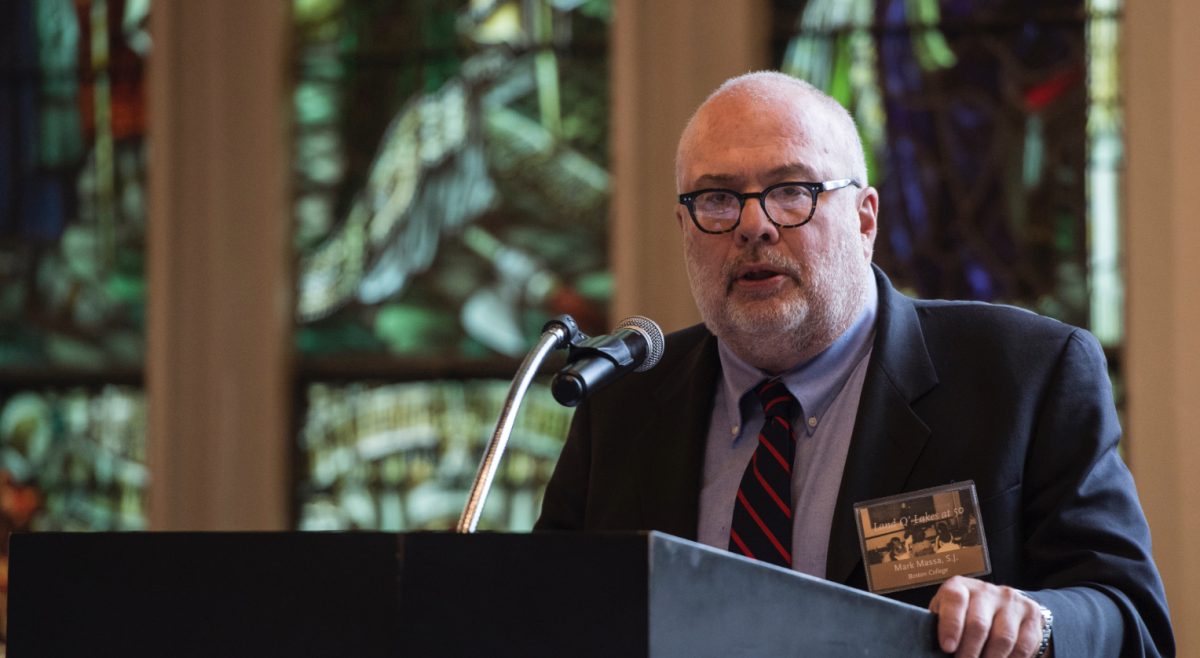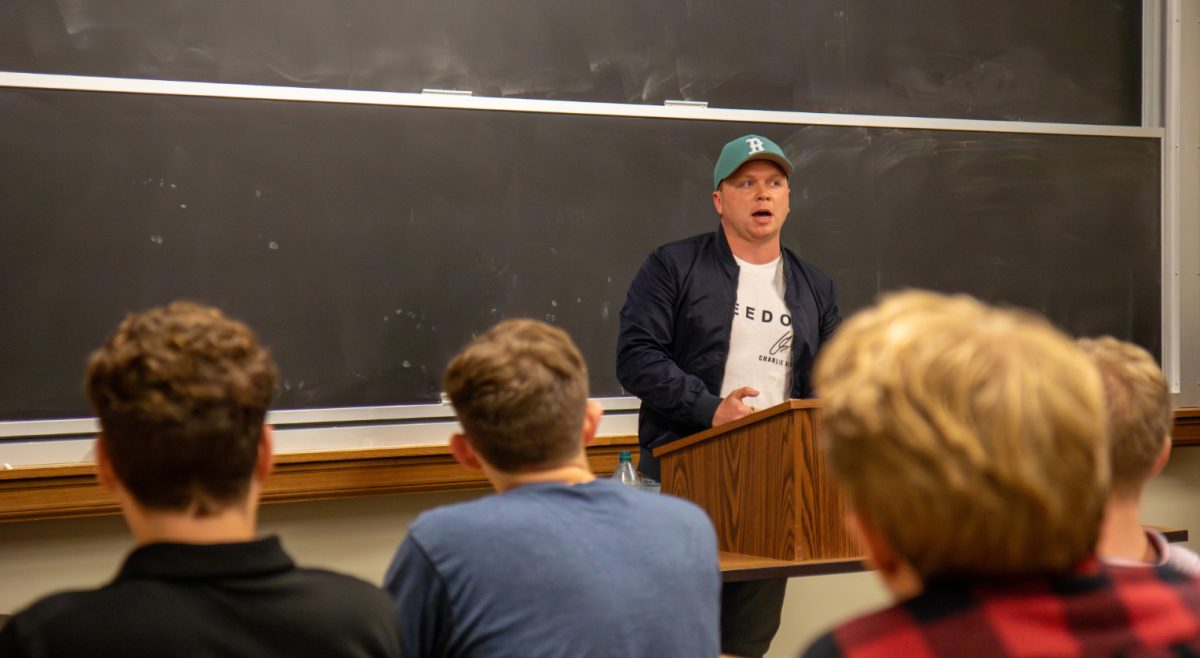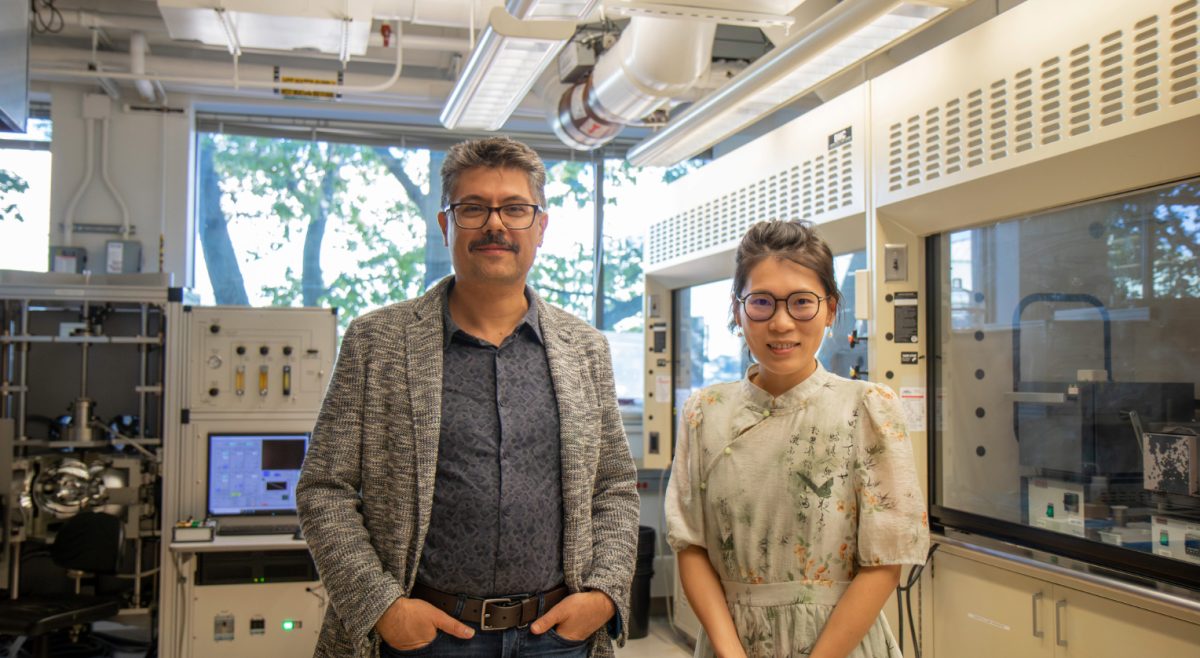Universities often use the word “we” when referring to their students, but not everyone is represented in this “we,” according to Jackie Jenkins Scott, a former president of Wheelock College. Margaret McKenna, former president of Suffolk University, specifically discussed Boston College’s board of trustees. Out of the 50 members, 11 are women. Two of the members are college presidents, which she said is good because they understand the business of education.
Scott, McKenna, and Brian Linnane, president of Loyola University Maryland and BC ’77, spoke at a panel on Friday afternoon about stakeholders at universities. The discussion was a part of a three day conference, “Toward a Culture of University Ethics,” sponsored by the Jesuit Institute, the Boisi Center for Religion and American Public Life, the Institute for the Liberal Arts, and the Lowell Humanities Series.
“The majority of people on university boards know nothing about the business,” McKenna said. “For the most part, even after they’re there, they know nothing about this business.”
McKenna described the demographics of boards of trustees at universities across the country as mostly older white men who are often lawyers or businessmen, whereas student bodies are mostly women and, increasingly, minority students.
“The governing boards do not reflect the population of our students in any way, shape, or form,” she said.
Doctors make up the board of a hospital, she said. Yet faculty are not often included on the boards of universities. Some university boards have no educators on them at all, she said.
On a corporate board, there are shareholders. Board members can be voted off by the shareholders if they are not doing a good job. At a university, shareholders are students, faculty, and alumni. But if a university board does a bad job, these shareholders of the university cannot vote them off.
She said many university presidents make it one of their primary goals to move up in the U.S. News and World Report rankings. This often involves taking money out of need-based scholarships to “buy” more students who have no need but will help the university rise in the rankings.
“No one says to you ‘Is that in line with our values—to become more selective?’” McKenna said.
Scott served as the president of Wheelock College from 2004 to 2016. She was the first African-American president at the University and the third woman president, despite the fact the college served only women for 79 years and is currently made up of 86 percent women.
Scott described the challenges she faced as president of the university. Administrators, faculty, and staff were not on the same page and often had different beliefs of what was fair and just. Scott often had to reflect on whether equality or equity would take precedence in fulfilling the school’s mission.
After earning her position at Wheelock College, Scott quickly learned that she was not a part of the traditional “we.” She commended the members of Wheelock’s board for being courageous enough to open themselves to new ideas about what a president should look like, be like, and what experiences a president should bring to the table.
“They were strong enough … to want to redefine the ‘we’ of the institution, to decide for inclusion and the future over hierarchy and history,” she said.
Scott said women and minorities are important stakeholders at universities across the country, but they are not represented equally on the board of trustees. There has been a large shift in student population, as students are coming from more diverse backgrounds. While the student demographic is changing, the administration has remained largely the same.
She said that there are steps administrators at universities should take to promote equity for women and see the value of non-traditional leadership. Men should join women to push for change, Scott said. She also called for the compensation of women who have been excluded by creating opportunities for them to grow and take on leadership roles.
Linnane spoke about his experience as president of Loyola University Maryland and how he has interacted with the surrounding neighborhood in his position.
Loyola is surrounded by affluent neighborhoods on three sides of its campus. The fourth side of the campus, bordered by York Road, is a low-income neighborhood. West of the road, the neighborhood is 75 percent white, has a population with a median income is $110,000, and has a high number of bachelor’s degrees. East of the road, the neighborhood is 89 percent African American, with a median income of $39,000, and only 21 percent of inhabitants have a bachelor’s degree.
“It’s really almost a tale of two cities,” he said.
Loyola has helped to develop after school programs for the neighborhood’s youth and a clinical center to deal with educational issues students in the area may face. It also has successfully advocated for streetscaping along York Road. It created a summertime farmer’s market that allows residents to buy fruits and vegetables at a low rate, helping to solve the neighborhood’s food desert.
Linnane has also spoken with Baltimore’s mayor to push for methadone clinics to be hospital-based. He has noticed that when these clinics are placed in communities, although the clinics do good work, they also attract people who sell drugs. The location of these clinics allows for recovering addicts to more easily fall back into their harmful habits.
During a brief question and answer period at the end of the event, the panelists explained how universities can become more inclusive and properly use “we.”
“One of the most interesting things I’ve found is that the campuses that have the highest voting rates are the campuses where people feel most like ‘we,’” McKenna said.
McKenna also reflected on her time at Suffolk and the unnecessary extravagance of her office while she was president.
“When I walked into the president’s office at Suffolk, I almost fell over,” she said. “It was unbelievable how huge it was. That kind of symbolism—there is no ‘we’ there.”
Featured Image by Julia Hopkins / Heights Editor













